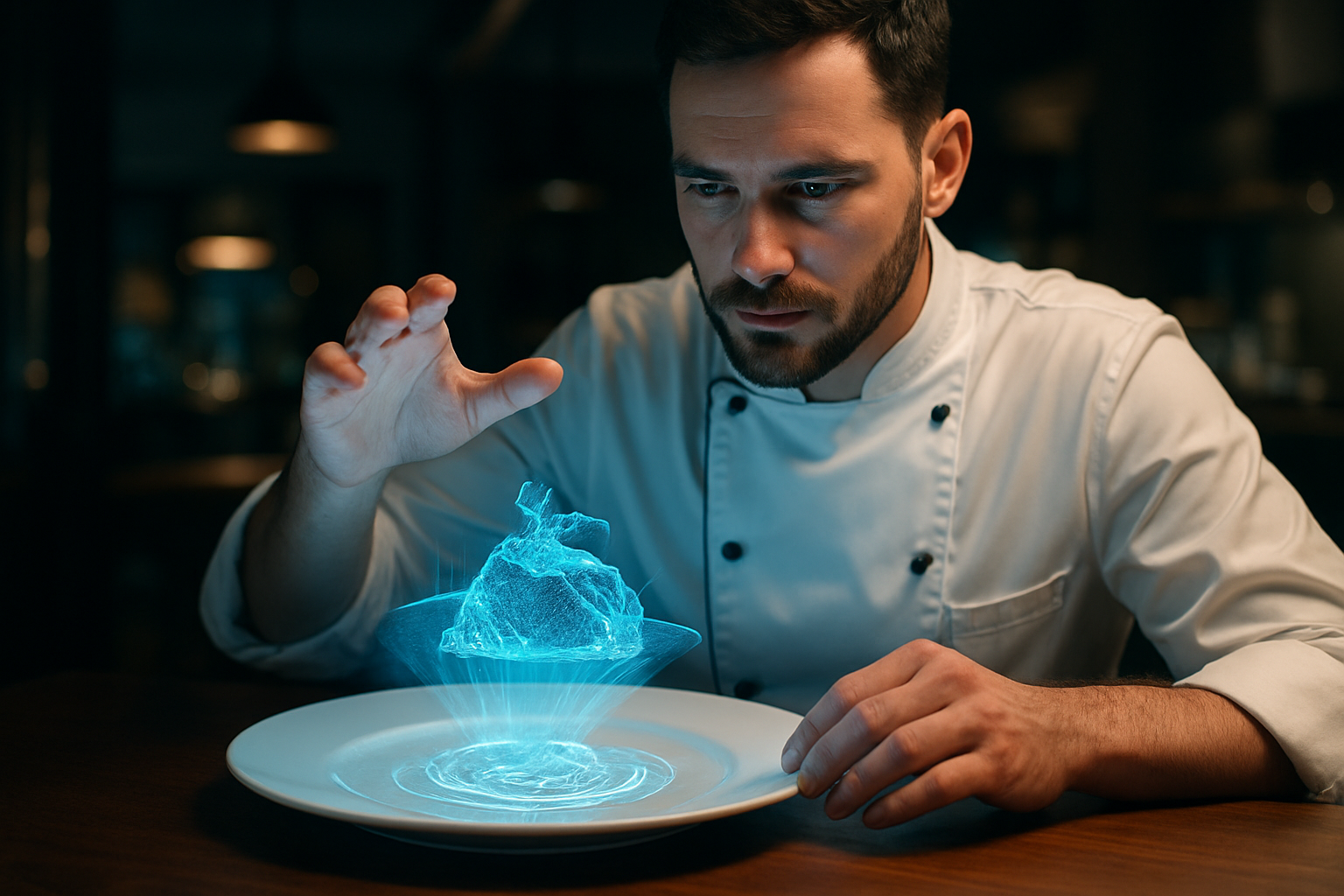Holographic Gastronomy: Where Food Meets Virtual Reality
In a world where technology continues to blur the lines between reality and the digital realm, a new culinary experience is taking shape that promises to revolutionize how we perceive and enjoy food. Holographic gastronomy, a cutting-edge fusion of culinary arts and virtual reality, is emerging as the next frontier in experiential dining. This innovative concept is captivating food enthusiasts, technologists, and artists alike, offering a multi-sensory journey that transcends traditional notions of eating out.

Technological Foundations
At the heart of holographic gastronomy lies a complex interplay of cutting-edge technologies. High-resolution projectors, motion sensors, and sophisticated software work in concert to create immersive dining environments. These systems can transform plain tabletops into interactive surfaces, projecting vivid 3D images of food that respond to diners’ movements and actions.
The Multi-Sensory Experience
What sets holographic gastronomy apart is its ability to engage multiple senses simultaneously. While diners consume physical food, their visual and auditory senses are stimulated by holographic projections and specially crafted soundscapes. Some establishments are even experimenting with olfactory technologies to introduce complementary scents, further enhancing the immersive experience.
Culinary Creativity Unleashed
For chefs, holographic gastronomy opens up unprecedented avenues for creativity. No longer constrained by the physical limitations of ingredients, they can design dishes that morph and transform before diners’ eyes. A simple dessert might begin as a barren landscape, gradually blooming into a lush garden of edible flowers as the meal progresses.
Cultural and Artistic Implications
Beyond its culinary applications, holographic gastronomy is emerging as a new form of artistic expression. Artists and chefs are collaborating to create immersive dining experiences that blur the lines between performance art, storytelling, and gastronomy. These events often explore themes of cultural identity, environmental sustainability, and the human relationship with food.
Challenges and Controversies
As with any emerging technology, holographic gastronomy faces its share of challenges and criticisms. Skeptics argue that the focus on visual spectacle may detract from the fundamental pleasures of taste and texture. There are also concerns about the potential for sensory overload and the loss of traditional dining rituals.
The Future of Dining Out
Despite these challenges, proponents of holographic gastronomy see it as the future of fine dining. As the technology becomes more sophisticated and accessible, we may see it expand beyond high-end restaurants into everyday dining experiences. Some futurists even speculate about the possibility of fully virtual meals, where the entire dining experience is simulated through advanced brain-computer interfaces.
Holographic Gastronomy in Practice
Several pioneering restaurants around the world have already begun incorporating elements of holographic gastronomy into their offerings. In Tokyo, a avant-garde eatery uses table-top projections to create interactive dining surfaces where digital koi fish swim beneath diners’ plates. A London-based pop-up restaurant takes guests on a multi-course journey through various ecosystems, with each dish accompanied by holographic representations of its origin.
Educational and Therapeutic Applications
Beyond pure entertainment, holographic gastronomy is finding applications in education and therapy. Nutritionists are exploring its potential to teach healthy eating habits by making the nutritional content of foods visually apparent. In healthcare, researchers are investigating how immersive dining experiences might help patients with eating disorders or those undergoing chemotherapy to rediscover the joy of eating.
The Economics of Holographic Dining
The integration of high-tech elements into dining experiences raises questions about accessibility and cost. Currently, holographic gastronomy is largely confined to high-end establishments due to the significant investment required in equipment and expertise. However, as with many technologies, costs are expected to decrease over time, potentially making these experiences more widely available.
Ethical Considerations
As holographic gastronomy evolves, it brings with it a host of ethical considerations. Questions arise about the authenticity of the dining experience and the potential for digital manipulation to mislead consumers. There are also concerns about data privacy, as these immersive experiences often involve collecting detailed information about diners’ preferences and behaviors.
Conclusion
Holographic gastronomy represents a bold step into the future of dining, offering a tantalizing glimpse of how technology might reshape our relationship with food. As this field continues to evolve, it promises to push the boundaries of culinary art, challenge our perceptions of reality, and redefine what it means to dine out. Whether it becomes a mainstream phenomenon or remains a niche experience for adventurous gourmands, holographic gastronomy is undoubtedly carving out a unique space at the intersection of food, art, and technology.





